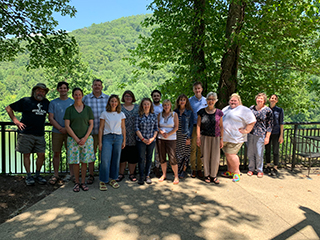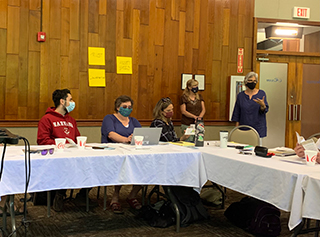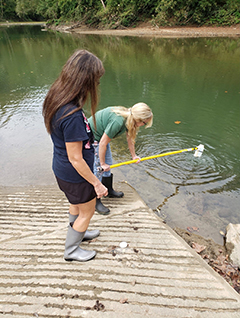Partnerships for Environmental Public Health (PEPH)
Study Location: Kentucky (Martin and Letcher Counties)
Academic Partners:
University of Kentucky
Jason Unrine, Ph.D.
Anna G. Hoover, Ph.D.
Jay Christian, Ph.D.
Lindell Ormsbee, Ph.D.
Kelly Pennell, Ph.D.
Wayne Sanderson, Ph.D.
Beverly May, Dr.PH., R.N., MSN
Community Partners:
LiKEN
Betsy Taylor, Ph.D.
Madison Mooney
Kentucky Headwaters
Debi Sexton
Appalachian Citizens’ Law Center
Mary Cromer, J.D.
Hilary Miles
Martin County Concerned Citizens
Nina McCoy
Project Description



Residents in the Appalachia region of Kentucky, specifically in Martin and Letcher Counties, are concerned about disinfection by-products (DBPs) in their drinking water. For more than a decade, residents frequently received DBP exceedance notices in utility bills. Worried about their health and seeking solutions, community members reached out to partner with University of Kentucky scientists who study environmental health.
Disinfection byproducts form when chlorine interacts with natural organic matter and inorganic ions, such as bromine, in water. The resulting chemicals include trihalomethanes, haloacetic acids, and other compounds that have been associated with a variety of adverse health effects, including increased risk of bladder cancer and adverse birth outcomes.
This project builds on findings from previous NIEHS-funded community engagement studies and implements a dynamic, multistakeholder approach to conducting research, building local environmental health knowledge, and developing translational products. Project goals are to raise understanding about and characterize spatial and temporal variations in DBP exposure. Ultimately, the research team hopes to reduce exposure to DBPs in Martin and Letcher Counties while developing strategies that can assist other rural communities facing similar drinking water challenges.
Specific aims of the project include:
- Enhance existing multisectoral partnerships through a formalized Stakeholder Consultation Core that:
- Informs and evaluates study components.
- Strengthens multidirectional communication.
- Increases participants’ environmental health knowledge.
- Collaboratively builds partnerships and trust among community groups, public officials, and university researchers.
- Examine the associations between home location and characteristics, temporal variation, and multi-route DBP exposure risks resulting from small drinking water systems.
- Apply emerging knowledge of source water chemistry and system operating conditions to develop, validate, and disseminate predictive models that can support small drinking water utilities in reducing DBP formation.


